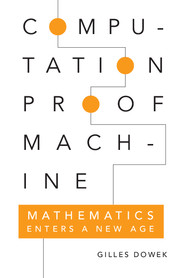Book contents
- Frontmatter
- Dedication
- Contents
- Introduction: In Which Mathematics Sets Out to Conquer New Territories
- PART ONE Ancient Origins
- PART TWO The Age of Reason
- Part Three Crisis of the Axiomatic Method
- 9 Intuitionistic Type Theory
- 10 Automated Theorem Proving
- 11 Proof Checking
- 12 News from the Field
- 13 Instruments
- 14 The End of Axioms?
- Conclusion: As We Near the End of This Mathematical Voyage …
- Biographical Landmarks
- Bibliography
- References
9 - Intuitionistic Type Theory
from Part Three - Crisis of the Axiomatic Method
Published online by Cambridge University Press: 05 May 2015
- Frontmatter
- Dedication
- Contents
- Introduction: In Which Mathematics Sets Out to Conquer New Territories
- PART ONE Ancient Origins
- PART TWO The Age of Reason
- Part Three Crisis of the Axiomatic Method
- 9 Intuitionistic Type Theory
- 10 Automated Theorem Proving
- 11 Proof Checking
- 12 News from the Field
- 13 Instruments
- 14 The End of Axioms?
- Conclusion: As We Near the End of This Mathematical Voyage …
- Biographical Landmarks
- Bibliography
- References
Summary
it would not be until the early 1970s that the axiomatic method would be challenged. Then, surprisingly enough, it was called into question simultaneously and independently in several branches of mathematics and computer science. Few of the main players in this episode in the history of mathematics were aware that they were pursuing the same aim, within logic as researchers pushed forward the work of their predecessors on constructivity, within computer science, and within “real-world” mathematics. This chapter will focus on logic.
INTUITIONISTIC TYPE THEORY
In the late sixties, many breakthroughs sparked a revival of interest in constructivity. On one hand, the algorithmic interpretation of proofs was developed thanks to the work of Curry, de Bruijn, and Howard; on the other hand, William Tait, Per Martin-Löf, and Jean-Yves Girard proved cut elimination for new theories. Most important, Girard proved cut elimination for Church's type theory, a variation on set theory. It thus became possible to provide constructive mathematics with a general framework equivalent to Church's type theory or set theory. Martin-Löf offered one such framework: intuitionistic type theory.
Intuitionistic type theory was born of an ascetic approach to logic: in order to provide a minimal basis for mathematics, this theory aims not only to exclude the principle of excluded middle, but also to break free of three axioms in Church's type theory, which we will not explore in detail in this book, namely the axiom of extensionality, the axiom of choice, and the axiom of impredicative comprehension. In the early seventies, many mathematicians doubted, understandably, that a theory so weakened would be capable of expressing much at all. Thirty years later, however, we are forced to recognize that vast sections of mathematics have been successfully expressed in this theory and in some of its extensions, such as Thierry Coquand and Gérard Huet's calculus of constructions, for instance.
- Type
- Chapter
- Information
- Computation, Proof, MachineMathematics Enters a New Age, pp. 89 - 95Publisher: Cambridge University PressPrint publication year: 2015



